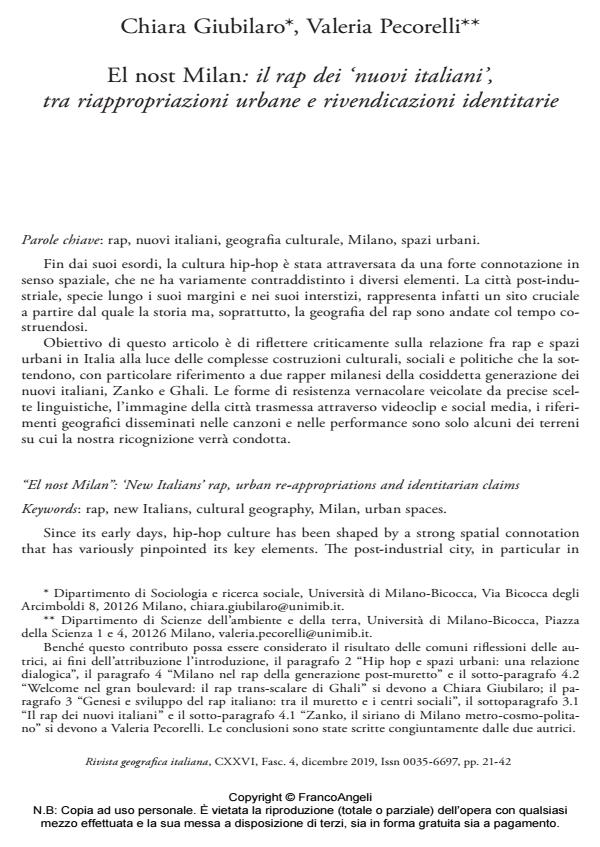"El nost Milan": ‘New Italians’ rap, urban re-appropriations and identitarian claims
Journal title RIVISTA GEOGRAFICA ITALIANA
Author/s Chiara Giubilaro, Valeria Pecorelli
Publishing Year 2019 Issue 2019/4
Language Italian Pages 22 P. 21-42 File size 247 KB
DOI 10.3280/RGI2019-004002
DOI is like a bar code for intellectual property: to have more infomation
click here
Below, you can see the article first page
If you want to buy this article in PDF format, you can do it, following the instructions to buy download credits

FrancoAngeli is member of Publishers International Linking Association, Inc (PILA), a not-for-profit association which run the CrossRef service enabling links to and from online scholarly content.
Since its early days, hip-hop culture has been shaped by a strong spatial connotation that has variously pinpointed its key elements. The post-industrial city, in particular in its edges and interstitial areas, is in fact a crucial site from which history but, above all, geography of rap has been built over time. This work aims at critically reflecting on the relationship between rap and urban spaces in the light of number of complex cultural, social and political constructions in the Italian city of Milan. In so doing, the study will focus on the musical production of two Milanese rappers representing the so-called New Italians generation, Zanko and Ghali. The forms of vernacular resistance conveyed by an accurate linguistic choice, the image of the city communicated over videoclips and social media together with geographical references disseminated in lyrics and performances are just some of the fields in which our survey will be conducted.
Keywords: Rap, new Italians, cultural geography, Milan, urban spaces.
- Music and words against racism: a qualitative study with racialized artists in Italy Annalisa Frisina, Sandra Agyei Kyeremeh, in Ethnic and Racial Studies /2022 pp.2913
DOI: 10.1080/01419870.2022.2046841
Chiara Giubilaro, Valeria Pecorelli, El nost Milan: il rap dei ‘nuovi italiani’, tra riappropriazioni urbane e rivendicazioni identitarie in "RIVISTA GEOGRAFICA ITALIANA" 4/2019, pp 21-42, DOI: 10.3280/RGI2019-004002